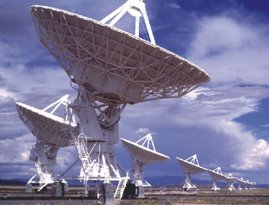Nobel Laureate Charles Townes announced evidence that 15 consecutive years of stellar contraction has been observed by UC Berkeley's Infrared Spatial Interferometer (ISI) atop Mt. Wilson Observatory in Southern California. Reported on June 9, 2009, the star has shrunk 15% since 1993 with an increasing rate. The average speed at which the radius of the star is shrinking over the last 15 years is approximately 210 - 219 m/s (470-490 mph).[24]
According to the university, Betelgeuse's radius is about 5.5 A.U.s, and the star's radius has shrunk by a distance equal to half an astronomical unit, or about the orbit of Venus.[25] Some theorists[who?] have speculated that this behavior is expected for a star at the beginning of the gravitational collapse at the end of its life.[citation needed] The mass of Betelgeuse puts it in range to become a neutron star or possibly a black hole.
http://en.wikipedia.org/wiki/Betelgeuse


No comments:
Post a Comment